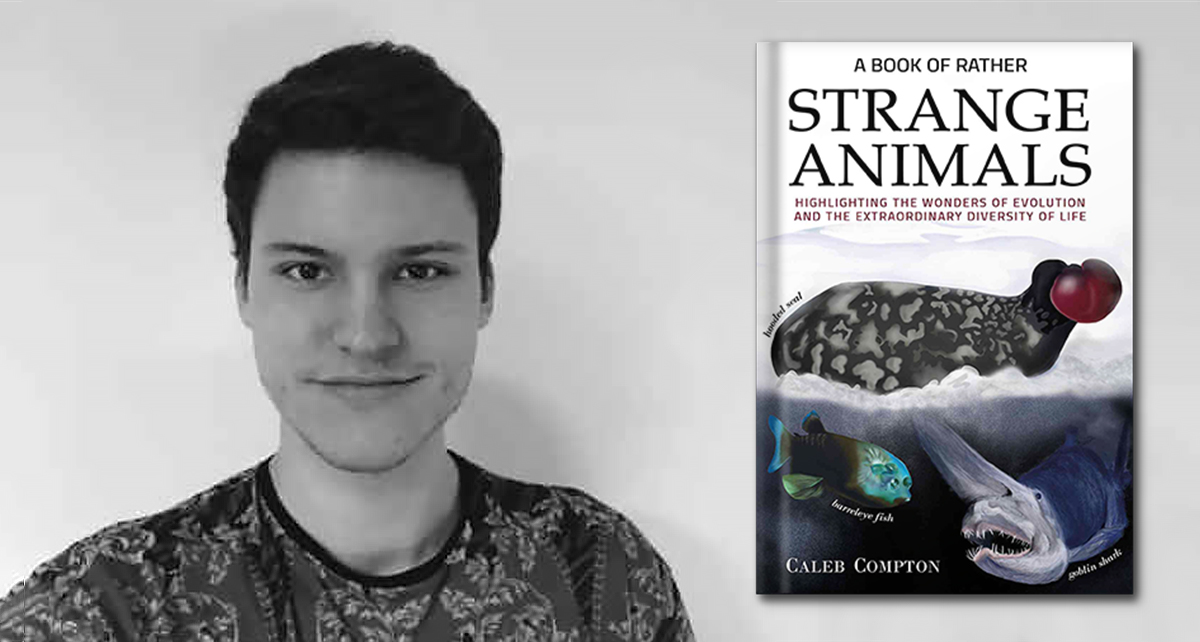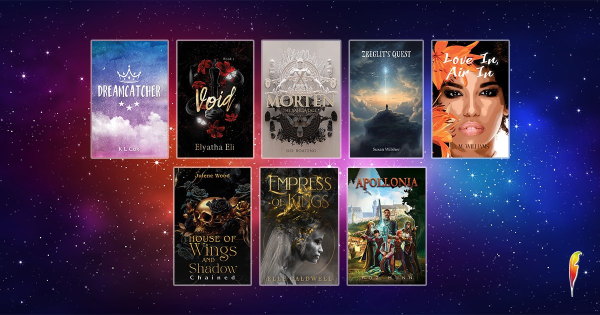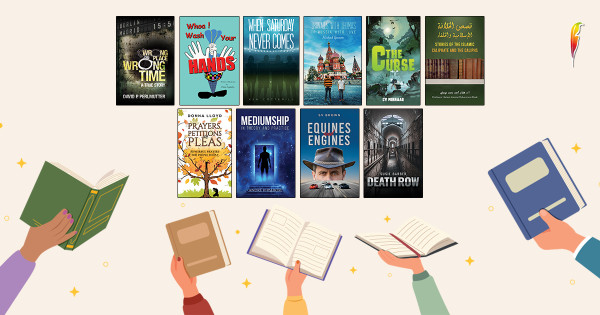
An Afternoon At Austin Macauley: Caleb Compton
Welcome to An Afternoon at Austin Macauley – Our brand-new blog feature where we interview our authors!
Asking them some fun, strange, interesting and out their questions, An Afternoon at Austin Macauley delves deeper into our author\'s lives and their current books, allowing you, the reader, to understand the thoughts and processes behind their creations!
Kicking off our very first An Afternoon at Austin Macauley, is Caleb Compton, author of ‘A Book of Rather Strange Animals’, a collection of a hundred remarkable, whacky and damn right strange looking animal species from all over the world, with fascinating descriptions of their feeding habits, mating rituals, defence mechanisms and far more!
Caleb’s book has been featured across a variety of high-profile magazines, articles and websites and more recently, was selected for The Publishers Association’s – 2019 Summer Recess Reading List for Parliamentarians, which is an outstanding achievement!
This book and all the animals that inhabit it are truly a fantastic discovery for all readers, of all ages and abilities, that’s why we sat down with Caleb to ask him 10 questions about himself to find out the backstory behind the creator of the book!
Where did your love for animals and more specifically, strange animals come from?
I\'ve always been fascinated by the natural world. As a kid, I loved watching documentaries presented by David Attenborough and I also had several books about strange animals.
I remember when I was younger reading a book about the deep sea and all the bizarre animals that live in that environment. My favourite was the anglerfish, it just looked like it shouldn\'t exist, with its enormous mouth and long lure to catch prey.
I also remember being absorbed by a book about animals from the tropics and learning about the sloth and proboscis monkey for the first time.
When studying animal biology at Exeter University in Devon, did they teach you about strange animals? If not, what sort of things did you study? (Any interesting modules you particularly enjoyed?)
My degree was biological sciences, which covered a broad range of topics in the first two years. I was fortunate to be able to specialise in animal biology in my final year and chose topics such as marine biology, animal developmental biology and ecology.
I chose to study the decline of pollinators for my dissertation, and wrote about the government\'s National Pollinator Strategy, and whether it was doing enough to protect pollinators in the UK. Although we didn\'t focus too much on strange animals, there were lots of interesting things that I studied at university, such as the life cycles of various marine creatures and animal psychology.
Do you have a favourite strange animal, or any animal that holds a special place in your heart?
There are so many strange animals that I love, but if I had to choose a favourite it would probably be the pangolin, which is the only scaly mammal on Earth. There are 8 species, which can be found in Africa and Asia. Their diet is almost entirely ants and termites, and their scales protect them from the insects\' bites. They can also curl up into a ball to protect themselves from predators.
They are just so strange and unique, which is probably why they are my favourite animal. I have \'adopted\' a pangolin called Marimba, but I haven\'t seen one in the wild or in a zoo yet.
Conservation is a big theme throughout the book. Why do you feel it is important to highlight the conservation issues facing more obscure species?
I think it is so important to raise awareness of lesser-known species that are threatened with extinction. Everyone is aware of the plight of the tiger or the giant panda, but who knows about the endangered purple frog or the saiga antelope, which are both at the brink of extinction?
We are losing thousands of animals every year due to human activities and we hardly ever hear about them on the news. That is why I wrote this book, to educate people about the impact we are having on the populations of animals that are not well known. One example is the vaquita, which is a critically endangered porpoise found in a small part of the Gulf of California. Scientists believe that this species is now down to just a dozen individuals, and it is likely to become extinct by the end of this year. Yet, many people have never heard of this creature, and its threats and conservation efforts are not well known to the public. The vaquita has suffered a rapid population loss due to illegal gillnet fishing, where a lot of individuals have been accidentally killed as bycatch. I talk about this in the book and explain how conservationists are trying to help protect this species.
According to the WWF, over 10,000 species are lost every year, a figure that is between 1,000 and 10,000 times higher than the natural extinction rate (which is the rate of loss before humans existed). Earlier this year, the IPBES estimated that around 1 million species of plants and animals are threatened with extinction as a result of human activity. We are in the 6th mass extinction event, the Holocene extinction, which is a result of anthropogenic impacts. Yet, we hear very little about this and I think that is wrong.
If you had to choose a favourite David Attenborough documentary, which would you choose and why?
My favourite documentary by David Attenborough would be the recent Our Planet series on Netflix. What I love about this one is the strong message it gets across, that the planet is fragile and if we don\'t change our actions, we will damage it beyond repair.
Other documentaries on the BBC have touched on this but Our Planet goes one step further. It\'s so important that people are aware of conservation and the perils so many creatures face, as I believe it is not discussed enough on the news. The cinematography is also stunning, and I am amazed at how they have managed to film some of the scenes on there.
What made you start a ‘Strange Animals’ twitter account in the first place?
After finishing my A Levels in 2013, I created the Strange Animals Twitter account. I wrote animal articles at the time for a website called Listverse and I started posting these species on Twitter for future reference for these articles.
Then a few people started to follow the account, so I started posting more often. After a few posts went viral, I managed to get 1,000 followers in a couple of months and then it just increased from there. Now I have around 43,000 followers, and two other accounts that I run, called Nature Is Weird and Extinct Animals, have 75,000 and 74,000 followers respectively.
Your twitter platform has over 40k followers – how do you find using social media to promote your books?
I have found my Twitter accounts to be a great platform to promote my book. As my book is sort of an expansion of the Strange Animals Twitter account, many of my followers have been interested in it, and want to learn more about these creatures.
I have hosted a competition on Twitter, to give away three free copies of A Book of Rather Strange Animals. To enter, my followers had to retweet my post and tweet me a photo of their favourite animal. I had over 400 entries to this competition and this shows how powerful Twitter can be as a tool for promoting a book, especially when you have already built a following on there.
Did the popularity of your twitter account inspire you to write ‘A Book of Rather Strange Animals’ or had you always had publishing a book in mind?
I have always enjoyed writing, and English was my best subject at school. Before my book, I used to write articles for a popular trivia website and was featured in their book.
I have also written articles for Devon Wildlife Trust, where I volunteer. I think the popularity of my Twitter accounts naturally spurred me on to write this book, although I have always loved writing and might have written a book anyway.
How have you found the publishing experience with Austin Macauley?
Although the publication stage took a very long time, it was worth it in the end and I am happy with the final product. The marketing team at Austin Macauley have been great and helpful with finding new contacts to promote the book.
I have been lucky enough to have my book featured in the April edition of BBC Wildlife Magazine, Eco Kids Planet and have had an interview for Scott Amyx\'s climate change podcast, which will be released in the coming months. Alisha on the marketing team has been really supportive and helpful with any questions I\'ve had.
Any hints at if ‘A Book of Rather Strange Animals’ will have a sequel?
I would love to write a sequel to A Book of Rather Strange Animals, as I have loved writing the first one, and researching all the different animals featured. I have also been thinking of writing a book based on one of my other Twitter accounts, either Nature Is Weird or Extinct Animals.
I have been fascinated with extinct animals recently and have done a lot of research on this topic for my Twitter account, so my next book might be based on that. It\'s just a matter of finding time to get started!
You can buy A Book of Rather Strange Animals here - https://www.austinmacauley.com/book/book-rather-strange-animals and support Caleb through social media on Twitter.
We use cookies on this site to enhance your user experience and for marketing purposes.
By clicking any link on this page you are giving your consent for us to set cookies







